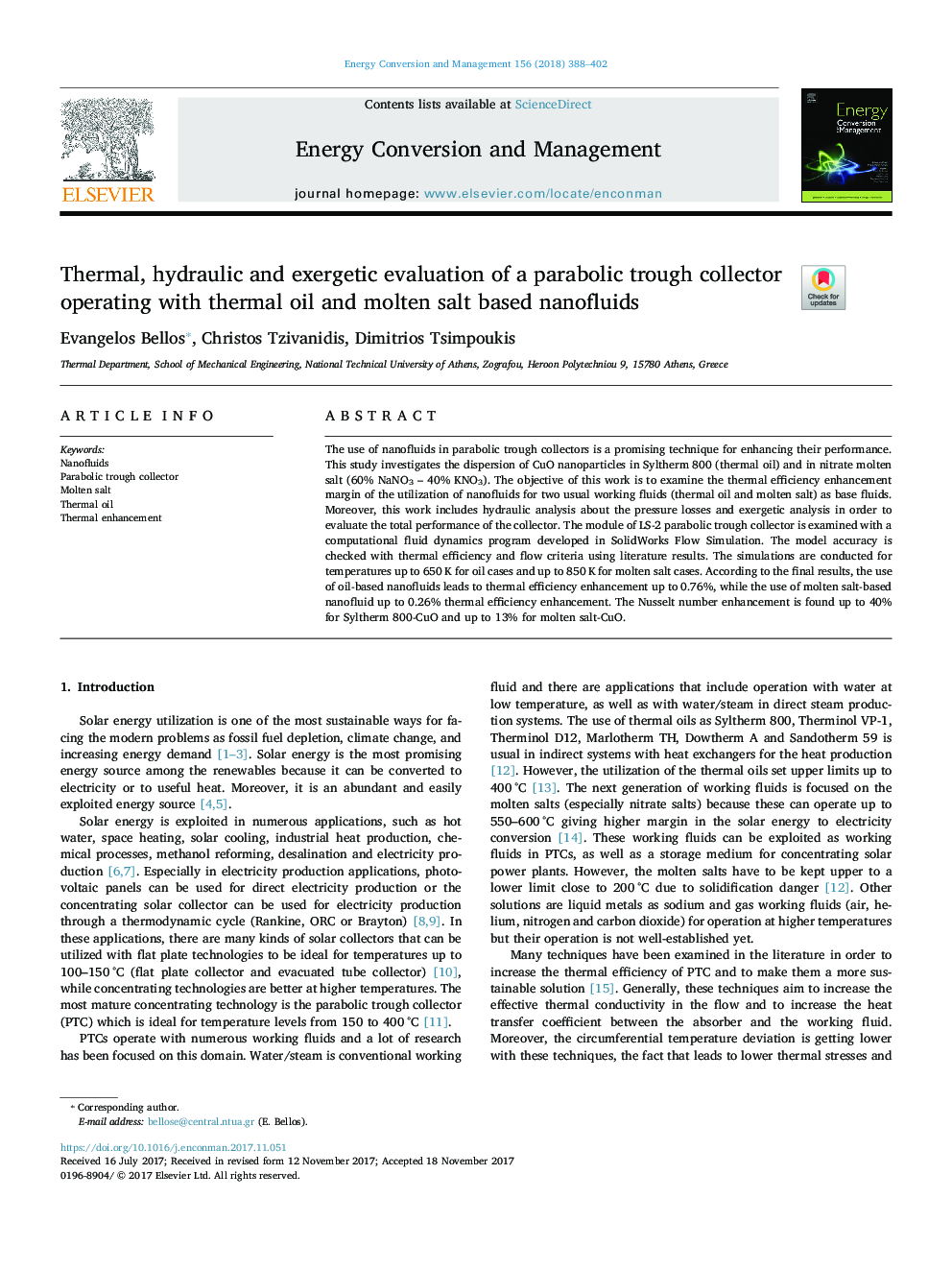| Article ID | Journal | Published Year | Pages | File Type |
|---|---|---|---|---|
| 7159498 | Energy Conversion and Management | 2018 | 15 Pages |
Abstract
The use of nanofluids in parabolic trough collectors is a promising technique for enhancing their performance. This study investigates the dispersion of CuO nanoparticles in Syltherm 800 (thermal oil) and in nitrate molten salt (60% NaNO3 - 40% KNO3). The objective of this work is to examine the thermal efficiency enhancement margin of the utilization of nanofluids for two usual working fluids (thermal oil and molten salt) as base fluids. Moreover, this work includes hydraulic analysis about the pressure losses and exergetic analysis in order to evaluate the total performance of the collector. The module of LS-2 parabolic trough collector is examined with a computational fluid dynamics program developed in SolidWorks Flow Simulation. The model accuracy is checked with thermal efficiency and flow criteria using literature results. The simulations are conducted for temperatures up to 650â¯K for oil cases and up to 850â¯K for molten salt cases. According to the final results, the use of oil-based nanofluids leads to thermal efficiency enhancement up to 0.76%, while the use of molten salt-based nanofluid up to 0.26% thermal efficiency enhancement. The Nusselt number enhancement is found up to 40% for Syltherm 800-CuO and up to 13% for molten salt-CuO.
Related Topics
Physical Sciences and Engineering
Energy
Energy (General)
Authors
Evangelos Bellos, Christos Tzivanidis, Dimitrios Tsimpoukis,
